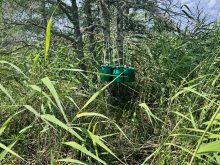WINNIPEG – Monsanto Canada broke ground on its new plant breeding centre in Winnipeg July 27, as part of the company’s $15 million commitment to develop high yielding canola varieties that are drought resistant and use nitrogen more efficiently.
The company plans to spend $12 million on the new facility in Winnipeg, which will employ 40 scientists and support staff dedicated to line development breeding.
Monsanto also announced a $3 million investment to expand its Crop Technology Research Centre near Saskatoon, where the company will test canola varieties developed in Winnipeg.
Read Also

Government, industry seek canola tariff resolution
Governments and industry continue to discuss how best to deal with Chinese tariffs on Canadian agricultural products, particularly canola.
At a sod turning at the University of Manitoba’s research park, a company representative announced the investment would help Monsanto double canola’s yield by 2030.
“We’re comfortable in making that commitment, because we’ve done the work already in the background,” said Ryan Baldwin, seed and traits lead for Monsanto Canada. “I think (we’re) very comfortable with the fact that we can double yields, based on the actual yields of 2000.”
Last June, Monsanto announced its intentions to double the yields of soybeans, corn and cotton by 2030. Adding canola to the list demonstrates Monsanto’s commitment to the crop, Baldwin added.
“This investment, along with our investment in Saskatoon, really shows that we’re here to stay and ready and willing to contribute to some of the goals that have been set,” Baldwin said. “In order for us to be at the forefront in the canola market, we need to make sure we have that strong genetics platform, which is what this (investment) is really about.”
Trish Jordan, Monsanto Canada spokesperson, said the yield baseline would likely be Statistics Canada data from 2000, but she couldn’t provide an exact yield number prior to deadline.
Moving to the new centre will allow the company to boost its breeding program, said Danie Theunissen, lead breeder for Monsanto Canada.
“We will (be able to) run more cycles in this facility. So we can enhance the speed at which we breed,” said Theunissen, noting that speed means new varieties will be available to producers much faster.
“In breeding, it’s all about time.”
The 2,700 sq. metre breeding centre will contain labs, greenhouses, growth rooms, soil preparation areas and a warehouse.
Monsanto expects it to open by July 2010.

















